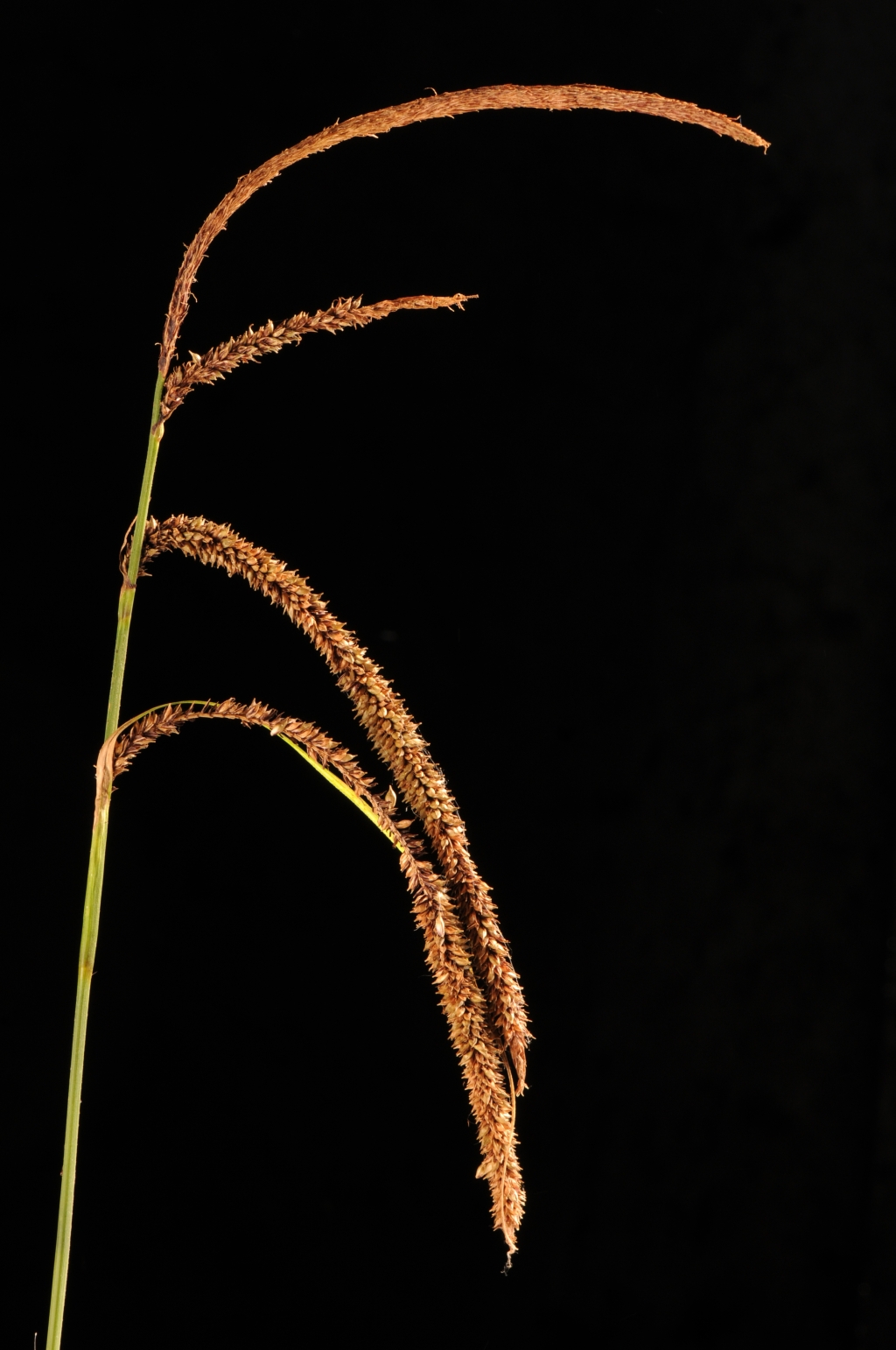Carex pendula
Huds. Giant SedgeRhizome short; shoots densely tufted. Culms erect, trigonous, smooth, 60–250(–300) cm long, c. 3–4 mm diam. Leaves shorter than culms, 12–20 mm wide, mid green on upper surface subglaucous on undersurface, rigid, septate-nodulose (more obvious when dry); sheath red-brown; ligule 30–60(–)80 mm long. Inflorescence c. 1/3 to 1/2 length of culm, with spikes solitary at nodes; lowest involucral bract shorter than inflorescence. Spikes distant, 5–16 cm long, fruiting spikes 3.5–5 mm diam.; uppermost 1 spike male, erect at first becoming pendulous; lower spikes entirely female or angrogynous, short-pedunculate, pendulous; male glumes 6–8 mm long, lanceolate, brownish-hyaline, apex acuminate; female glumes 2–3 mm long, ovate, red-brown with pale midrib, apex acute or acuminate; utricles 3–3.5 mm long, c. 1.5 mm diam., ovoid-ellipsoid, membranous,few-nerved, glabrous, green when immature, light brown at maturity; beak c. 0.3–0.4 mm long, truncate, apex minutely ciliate; style 3-fid. Nut c. 1.8–2 mm long, c. 1.2 mm diam., dark brown. Flowers in late spring to early summer.
VVP, CVU, OtR. Naturalised in S.A. Native to northern Africa (Algeria, Morocco, Tunisia), and Eurasia. Naturalised in New Zealand. Known from two recent collections, at Mt Macedon, and near Blackwood, where sparingly established along a weedy creek, and a weedy roadside. Occasionally cultivated, which is evidently the source of Victorian incursions. It seeds prolifically, and readily self-establishes in gardens. It has the potential to become a serious environmental weed, especially of riparian habitats. Sometimes sold in nurseries, which may further aid the spread of the species in Victoria. Carex pendula has recently been planted as part of a Landcare restoration project at several sites in the southern Otway Range including Carisbrook Creek, where it was mistaken for Carex fascicularis.
Readily recognisable species on account of its robust size, broad septate-nodulose leaves, narrow and usually pendulous spikes. It is the tallest growing, broadest-leaved Carex in Victoria.
 Spinning
Spinning

